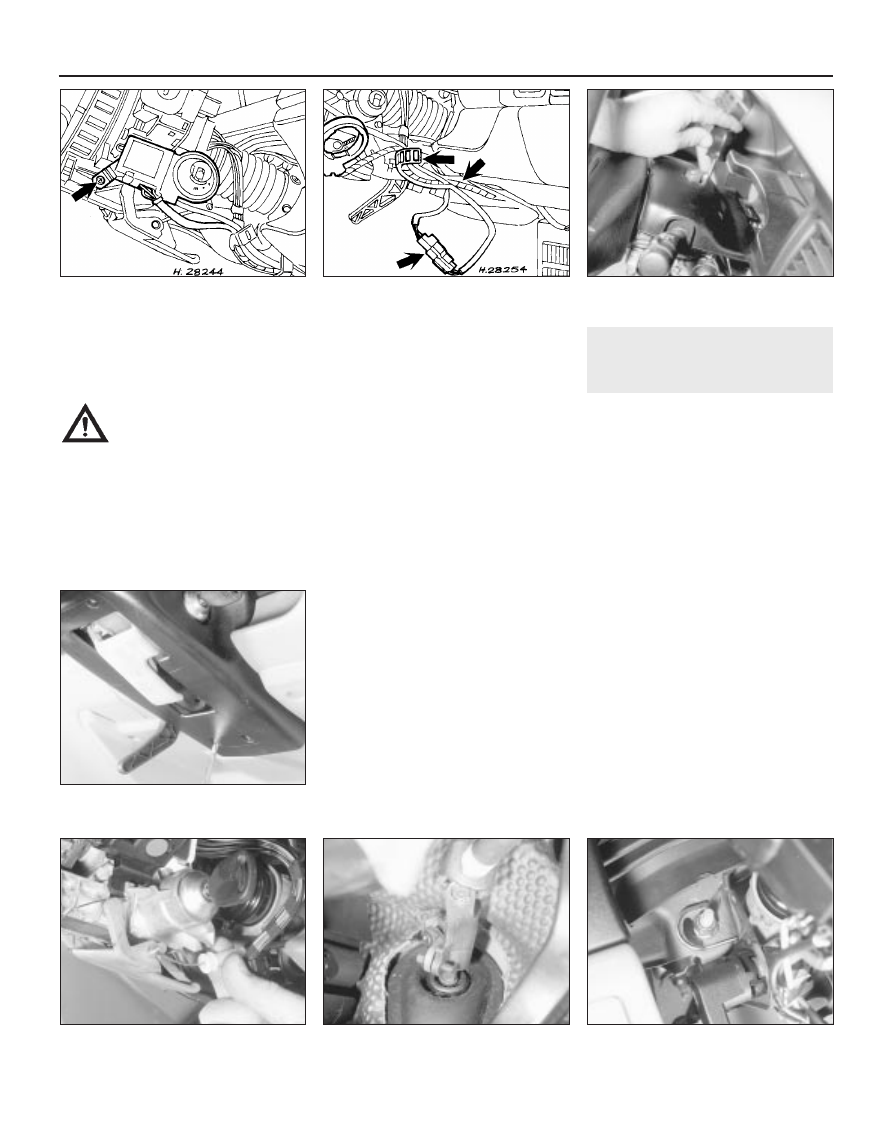Ford Orion. Manual - part 54

11 Disconnect the multi-plug from the rear of
the module, and remove the module from the
vehicle.
Warning: Position the air bag
module in a safe place, with the
mechanism facing downwards as
a precaution against accidental
operation.
12 Undo the four screws, and remove the
steering column lower shroud.
13 Undo the screws and withdraw the
detachable lower facia panel from beneath
the steering column (see illustration).
14 Where applicable, undo the single screw
and withdraw the Passive Anti-Theft
System (PATS) transceiver from the
iignition switch/steering lock barrel (see
illustration).
15 Release the steering column wiring
harness from the retaining clips, and
disconnect the air bag module wiring harness
multi-plug (see illustration).
16 Turn the steering wheel so that the
roadwheels are in the straightahead position,
then remove the ignition key to lock the
steering.
17 Unscrew the retaining bolt from the centre
of the steering wheel, then insert the ignition
key and turn it to position “I”. Grip the steering
wheel each side, then pull and withdraw it
from the column shaft. If the wheel is reluctant
to budge, give it a sharp tap on the underside
of the spoke (as near to the hub as possible)
with the palm of your hand.
Refitting
All models
18 Refit in the reverse order of removal.
Ensure that the indicator stalk is set in its
central (off) position, to avoid damaging it with
the tag of the wheel as it is pushed down the
shaft. Make sure that the wheel is centralised,
as noted on removal. Turn the ignition key so
that it is in position “I” (steering unlocked).
Tighten the retaining bolt to the specified
torque setting.
21 Steering column -
removal and refitting
3
Removal
1 Disconnect the battery negative (earth) lead
(refer to Chapter 5, Section 1).
2 Remove the steering wheel as described in
the previous Section.
3 Remove the screws and withdraw the
steering column upper and lower shrouds
(see illustrations).
4 Remove the multi-function switch assembly
from the column, with reference to Chapter
12.
5 Disconnect the ignition switch multi-plug,
and release the wiring from the wiring loom
guide.
6 Detach the bonnet release cable from the
lever, then remove the lever from the column
(see illustration).
7 Unscrew and remove the clamp bolt
securing the steering column to the pinion
shaft (see illustration).
8 Loosen off the column lower retaining nuts,
then unscrew and remove the upper retaining
nuts (see illustration). Remove the steering
column from the vehicle.
Refitting
9 Refitting is a reversal of the removal
procedure, but note the following:
10•14 Suspension and steering systems
21.8 Steering column upper retaining nut
(on the left-hand side of the column)
21.7 Steering column-to-pinion shaft
coupling and clamp bolt
21.6 Detach the bonnet release cable from
the lever
21.3B . . . and lower steering column
shrouds
21.3A Remove the upper . . .
20.15 Release the steering column wiring
harness and multi-plug as indicated
20.14 Undo the screw (arrowed) and
withdraw the Passive Anti-Theft System
(PATS) transceiver from the ignition
switch/steering lock barrel